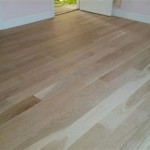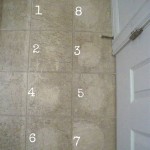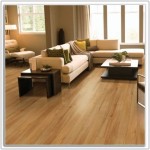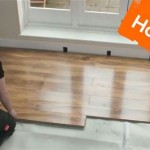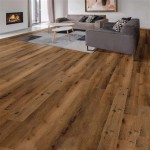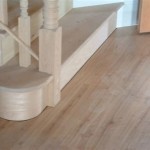Understanding and Addressing Gray Spots on Hardwood Floors
Hardwood floors, prized for their beauty and durability, can sometimes develop unsightly gray spots. These discolorations can detract from the overall aesthetic and raise concerns about the floor's condition. Identifying the cause of these gray spots is crucial for determining the appropriate course of action to restore the floor's appearance and prevent further damage.
The appearance of gray spots on hardwood floors is not always indicative of a single, easily identifiable issue. A range of factors can contribute to their development, and a thorough assessment is necessary to pinpoint the underlying problem. Ignoring these spots can lead to more significant and costly repairs down the line.
Moisture Intrusion: A Primary Culprit
One of the most common causes of gray spots on hardwood floors is moisture intrusion. Wood is a hygroscopic material, meaning it readily absorbs and releases moisture from the surrounding environment. Excessive moisture, whether from spills, leaks, or high humidity, can penetrate the wood fibers, leading to discoloration and damage.
When moisture enters the wood, it can create an environment conducive to the growth of mold and mildew. These microorganisms thrive in damp conditions and can stain the wood, often resulting in gray or black spots. The discoloration is a byproduct of their metabolic processes and the breakdown of the wood's structural components. Leaks from appliances, such as dishwashers or refrigerators, can seep under the flooring and cause these localized areas of discoloration. Similarly, plumbing leaks in walls or beneath the floor can saturate the wood over time, leading to visible gray spots.
High humidity levels, especially in basements or poorly ventilated areas, can also contribute to moisture absorption by the hardwood. Over time, this constant exposure to moisture can cause the wood to darken and develop gray patches. Proper ventilation and dehumidification are essential in preventing moisture-related issues.
Another important consideration is moisture coming from underneath the floor. Concrete slabs, if not properly sealed or if they lack a moisture barrier, can transmit moisture upward into the hardwood flooring. This is particularly problematic in below-grade installations or in areas with high water tables. In such situations, the gray spots may appear more widespread and persistent.
Identifying moisture intrusion as the cause often involves checking for visible leaks, assessing the humidity levels in the room, and inspecting the subfloor for signs of dampness or mold growth. A moisture meter can be used to measure the moisture content of the wood and determine if it exceeds acceptable levels.
Wear and Tear of the Finish
The protective finish on hardwood floors is designed to shield the wood from wear, scratches, and moisture. However, over time, this finish can erode, leaving the wood vulnerable to damage. Areas with high foot traffic, such as hallways and entryways, are particularly susceptible to finish wear. As the finish wears away, the underlying wood becomes exposed to dirt, grime, and spills, leading to discoloration.
The gray spots caused by finish wear often appear in areas where the finish has been completely worn through. These spots may look dull and faded compared to the surrounding areas with intact finish. The exposed wood absorbs dirt and stains more readily, contributing to the gray appearance. The use of harsh cleaning products or abrasive materials can accelerate the wear of the finish, making the floor more prone to discoloration.
In some cases, inadequate or improper application of the finish during the initial installation can also contribute to premature wear. A thin or uneven finish layer provides less protection and is more likely to break down under normal use. Similarly, using a low-quality finish can result in poor durability and increased susceptibility to damage.
Identifying finish wear as the cause involves closely examining the surface of the floor for areas where the finish is thin or missing. The gray spots will often be located in areas of high traffic or where furniture has been dragged across the floor. Applying a small amount of water to the affected area can also help to determine if the finish is compromised. If the water is quickly absorbed into the wood, it indicates that the finish is no longer providing adequate protection.
Chemical Reactions and Stains
Certain chemicals and substances can react with the wood or the finish on hardwood floors, resulting in gray stains or discoloration. These reactions can occur due to spills, cleaning products, or even certain types of rugs or mats. Understanding the potential sources of chemical reactions is important in preventing and addressing gray spots.
Ammonia-based cleaning products, for example, can react with the tannins in the wood, causing it to darken or turn gray. Similarly, improper use of bleach or other harsh chemicals can damage the finish and leave behind unsightly stains. It is crucial to use cleaning products specifically designed for hardwood floors and to follow the manufacturer's instructions carefully.
Certain rubber-backed rugs or mats can also cause discoloration on hardwood floors. The rubber can react with the finish or the wood itself, leading to gray or yellow stains. This is particularly common with rugs and mats that have been left in place for extended periods. To prevent this, it is recommended to use rugs and mats with breathable backings or to periodically lift and clean underneath them.
Pet urine is another common source of chemical reactions that can cause gray spots on hardwood floors. The ammonia in pet urine can stain the wood and damage the finish. Promptly cleaning up pet accidents and using enzymatic cleaners specifically designed to neutralize pet odors can help to prevent permanent discoloration.
Identifying chemical reactions as the cause often involves reviewing the history of spills or cleaning products used on the floor. The pattern of the gray spots may also provide clues. For example, if the spots are located underneath a rug or mat, it is likely that the rug is the source of the discoloration.
Sunlight Exposure and UV Damage
Prolonged exposure to sunlight can cause significant damage to hardwood floors, including discoloration and fading. Ultraviolet (UV) radiation from the sun can break down the lignin in the wood, leading to a graying or bleaching effect. This is particularly noticeable in areas that receive direct sunlight, such as near windows or sliding glass doors.
The gray spots caused by sunlight exposure often appear as faded or bleached areas on the floor. The wood may lose its original color and develop a dull, washed-out appearance. The extent of the damage depends on the intensity and duration of the sunlight exposure, as well as the type of finish on the floor.
Darker wood species, such as cherry or walnut, are generally more susceptible to UV damage than lighter wood species, such as maple or oak. The finish on the floor also plays a role in protecting the wood from sunlight. Finishes with UV inhibitors can help to reduce the amount of damage caused by sunlight exposure.
To prevent UV damage, it is recommended to use curtains, blinds, or window film to block direct sunlight. Rotating area rugs or furniture can also help to distribute the sunlight exposure more evenly and prevent localized fading. Applying a fresh coat of finish with UV inhibitors can help to restore the floor's appearance and protect it from further damage.
Improper Cleaning Techniques
Using incorrect cleaning methods or products can inadvertently contribute to the development of gray spots on hardwood floors. Overly wet mopping, using abrasive cleaners, or failing to properly maintain the floor's finish can all lead to discoloration and damage.
Excessive water from wet mopping can seep into the seams between the floorboards, leading to moisture intrusion and potential mold growth. This can result in gray or black spots along the edges of the boards. It is important to use a damp mop rather than a wet mop, and to thoroughly dry the floor after cleaning.
Abrasive cleaners, such as scouring pads or harsh chemicals, can scratch the finish and damage the wood. This can create a dull, gray appearance and make the floor more susceptible to staining. It is recommended to use cleaning products specifically designed for hardwood floors and to avoid using abrasive materials.
Neglecting to maintain the floor's finish can also contribute to discoloration. Over time, the finish can wear away, leaving the wood vulnerable to dirt, grime, and moisture. Regularly cleaning and polishing the floor can help to maintain the finish and prevent damage. Applying a fresh coat of finish every few years can also help to protect the wood and keep it looking its best.
Underlying Subfloor Issues
Problems with the subfloor beneath the hardwood flooring can also manifest as gray spots. An uneven, unstable, or moisture-laden subfloor can compromise the integrity of the hardwood and lead to discoloration and other issues.
If the subfloor is uneven, it can cause the hardwood flooring to flex and move, leading to stress cracks in the finish and potential damage to the wood. This can create openings for moisture to enter, leading to discoloration and mold growth. Leveling the subfloor before installing hardwood flooring is essential to ensure a stable and even surface.
A weak or unstable subfloor can also cause the hardwood flooring to shift and buckle, leading to gaps between the boards. These gaps can trap dirt and moisture, creating a breeding ground for mold and mildew. Reinforcing the subfloor can help to prevent these issues.
Moisture in the subfloor can also migrate into the hardwood flooring, causing it to swell and warp. This can lead to discoloration, cupping, and other forms of damage. Ensuring that the subfloor is properly sealed and protected from moisture is crucial for preventing these problems.
Addressing subfloor issues typically involves removing the hardwood flooring and inspecting the subfloor for signs of damage, moisture, or instability. Repairing or replacing the subfloor may be necessary before installing new hardwood flooring.
Ultimately, resolving gray spots on hardwood floors requires a careful assessment of the underlying causes. From moisture intrusion to chemical reactions, understanding the potential sources of discoloration is the first step in restoring the floor's beauty and preventing future problems. Professional assessment and remediation may be necessary for complex or widespread issues.

Hardwood Floor Refinishing Oakton Va Dustless

Common Stains And Discolorations Hardwood Floors

What If My Hardwood Floor Has Pet Stains

Options For Fixing The Dreaded Pet Stains On Wood Floors Floor Business

What Color Should I Stain My Wood Floors

Removing White Spots On Hardwood Floor 7 Simple Method

Stain Colors

At Last Refinished Hardwood Floors Centsational Style

What Color Should I Stain My Wood Floors

How To Fix Gray Spots On Hardwood Floors Countyoffice Org
Related Posts

